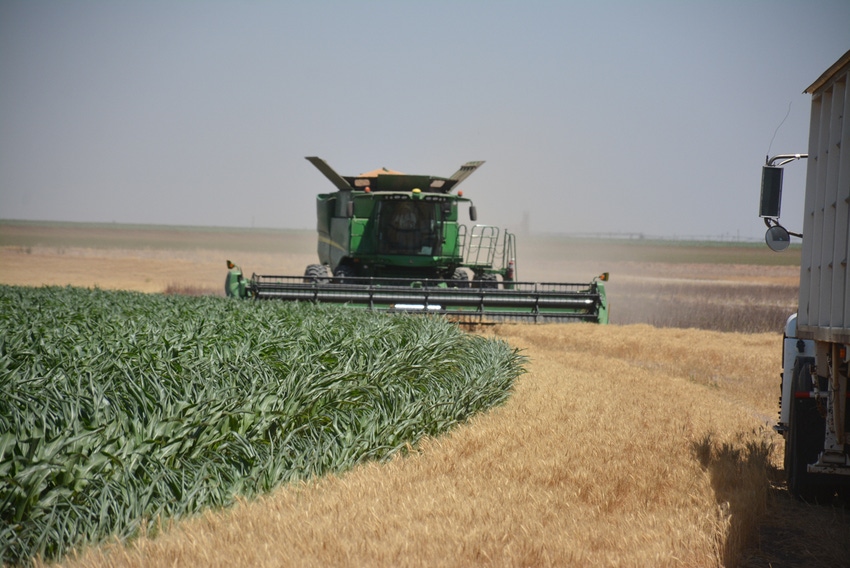
Less quantity sometimes makes better quality, says a grain marketer, about the state of the wheat harvest on the Texas South Plains. A lack of significant moisture since October of 2017, coupled with high temperatures and gusting winds has produced low wheat yields but good test weights, in some cases, according to Brent Wilhelm, grain marketer, Ag Producer Co-op, Olton, Texas.
“The drought has had a big impact on the wheat. I don’t know the percentage but the receipts are going to be down considerably because of the drought,” says Wilhelm. “There’s not really much wheat out there to be harvested and what’s out there, the yields aren’t very good at all.”
The test weights, on the other hand, are another story. “The quality is probably better than it has been the last couple of years, it just seems that’s the way Mother Nature works: less quantity, more quality.”
While the grain looks small, test weights have been averaging above 60 pounds per bushel, while the first few samples the co-op has received, have had protein levels rated at 12 percent or more. “The protein and test weights are holding in pretty good — it’s really kind of surprising.”
See Wheat harvest underway photo gallery.
As of June 3, 2018, only 35 percent of the winter wheat in Texas has been harvested, while only 7 percent is complete in Oklahoma. In both states, about 30 percent of the crop condition is rated fair-to-very poor, while more than 10 percent, but less than 15 percent, has been rated good, according to the USDA National Agricultural Statistics Service.
Lamb County farmer Tullie Struve, says his dryland wheat crop is a mixed bag with disappointing test weights and low yields, but of the fields that are “decent enough,” he’ll go ahead and harvest and turn others into insurance.
"Of what we've harvested, the yields, though not great, are not as bad as I thought they would be, as dry of a winter and spring as we had," says Struve.
Wheat’s low market price has affected wheat acres as well. “It’s not going to be much of a crop, especially here,” says Wilhelm, who adds there is a pretty good demand for silage and hay. “The price wasn’t very good to begin with, and guys would have had to have irrigated it considerably to even have it make anything. A lot guys opted to graze it out and terminate it and try to plant cotton — all I know is, it’s not going to be much.”
According to the USDA NASS May crop report, production for Oklahoma is forecast at 52 million bushels, down 47 percent from 2017. Yield per acre is expected to average 26 bushels with 2 million acres expected to be harvested for grain. In Texas, wheat production is speculated to be a little over 43 million bushels, down 37 percent from 2017. Yield per acre is expected to average 27 bushels with harvested acreage for grain at 1.6 million acres, down 32 percent from the previous year.
“It’s amazing that there is even any wheat out there, considering a lot of it received less than an inch of rain from the time it was planted until it was harvested,” Wilhelm adds.
About the Author(s)
You May Also Like






